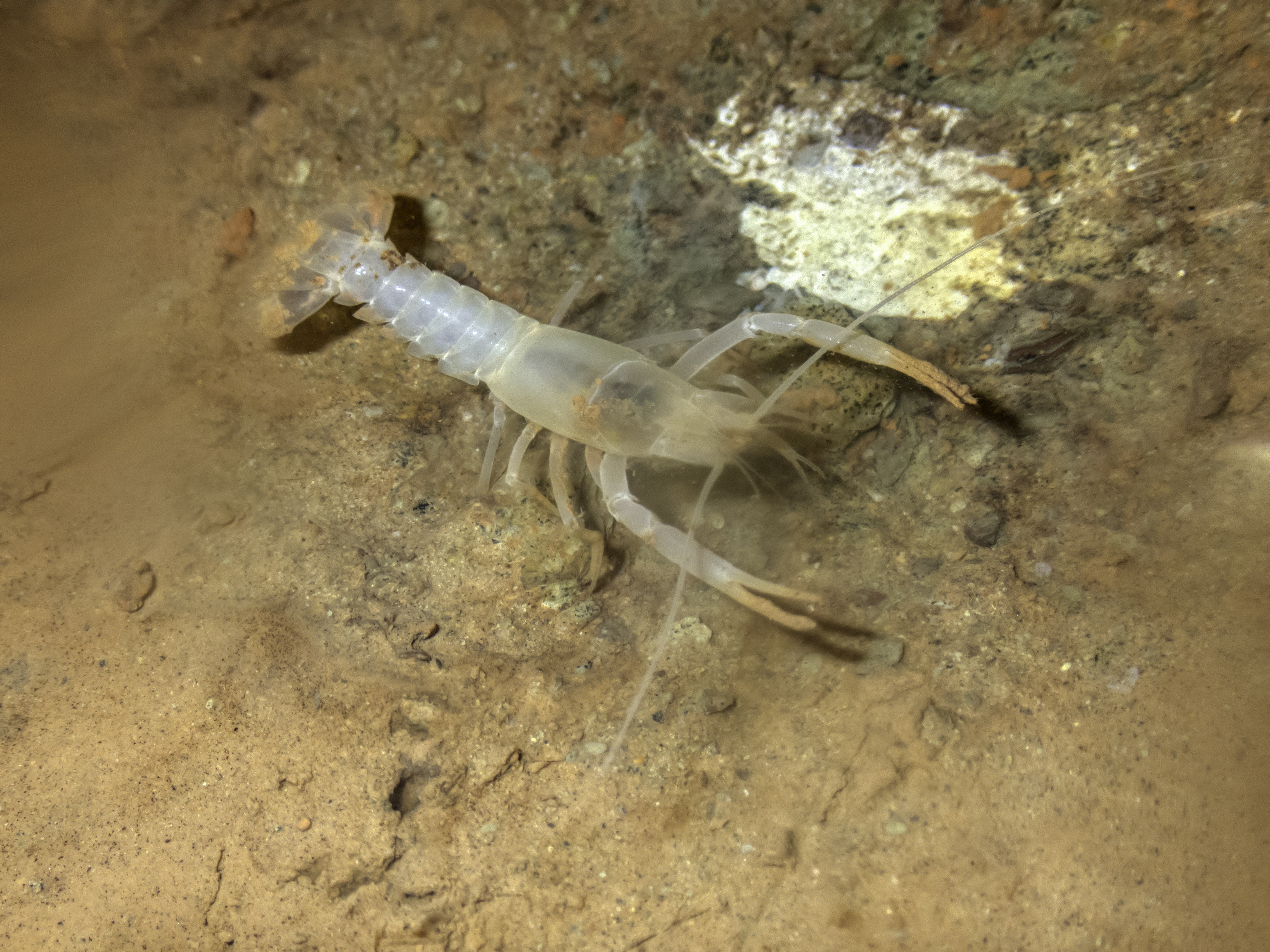The University of California, Irvine has appointed Kristine Collins to be its dean of the Division of Continuing Education, following a North American-wide search. She will assume the post on Aug. 22.
Month: June 2022
Mount Sinai Researchers Awarded $16 Million to Develop Antivirals Against Viruses With Pandemic Potential
Researchers at the Icahn School of Medicine at Mount Sinai have been awarded an initial $16 million from the National Institutes of Health (NIH) to discover and develop globally accessible and affordable novel oral antivirals to combat COVID-19 and future pandemics.
American Society for Radiation Oncology welcomes new VP of Education and Director of Diversity, Equity & Inclusion
The American Society for Radiation Oncology (ASTRO) recently hired Chris Neumann as its new Vice President of Learning and Education, and Kirsta Suggs as its first Director of Diversity, Equity and Inclusion (DEI).
For Youngsters, Getting Ear Tubes No Longer Involves Surgery
Like a lot of young children, from the time she was a year old, Cassidy Clapp was plagued by one ear infection after another.

Electrolyte Additive Offers Lithium Battery Performance Breakthrough
UPTON, NY—A team of researchers led by chemists at the U.S. Department of Energy’s (DOE) Brookhaven National Laboratory has learned that an electrolyte additive allows stable high-voltage cycling of nickel-rich layered cathodes. Their work could lead to improvements in the energy density of lithium batteries that power electric vehicles.

Study Evaluates How to Eliminate Telemedicine’s Virtual Waiting Room
UC San Diego Health conducted a 10-week study to evaluate how text messaging a link to patients when their doctor is ready provides a way to connect patients and doctors without relying on the virtual waiting room.
MD Anderson Research Highlights for June 1, 2022
Current advances include new biomarkers to predict chimeric antigen receptor (CAR) T cell therapy outcomes and neurotoxicities, novel treatment targets for pre-cancerous pancreatic lesions and T-cell acute lymphoblastic leukemia, a new approach to improve immunotherapy responses in cold tumors, a profile of synthetic lethal targets for cancers with tumor suppressor loss, and promising clinical data for acute myeloid leukemia and cancers of unknown primary.

Uncorking Champagne Bottle Produces Supersonic Shock Waves
There is much more that comes out of the pop of an opening champagne bottle than meets the senses. In Physics of Fluids, computational fluid dynamics simulations revealed the formation, evolution, and dissipation of shock wave patterns as the carbon dioxide mixture shoots through the bottleneck in the first millisecond after cork popping. The findings could provide insight into the complex and transient behavior of supersonic flow in applications ranging from rocket launchers, ballistic missiles, and wind turbines to electronics manufacturing and underwater vehicles.

University of Miami Miller School of Medicine Selected for National NF2 Tumor Clinical Trial
A University of Miami Miller School of Medicine researcher is hoping an innovative multicenter clinical trial will lead to new therapies for neurofibromatosis type 2 (NF2), a devastating disease causing multiple types of tumors involving the brain, spine, and peripheral nerves.
test
tes

UCI-led astronomy team finds evidence of galactic metal shrouded in dust
A thorough understanding of galaxy evolution depends in part on an accurate measurement of the abundance of metals in the intergalactic medium – the space between stars – but dust can impede observations in optical wavelengths.

First Images from NASA’s Webb Space Telescope Coming Soon
NASA has announced it will cap a six-month period of testing and preparing the James Webb Space Telescope with the release of the observatory’s first full-color images and additional spectroscopic data on July 12, 2022. The images will mark the beginning of Webb’s science operations, in which eager astronomers will have the opportunity to use Webb to explore the early universe, exoplanet atmospheres, star birth and death, and the evolution of galaxies like never before.
Age-Related Lung Changes Provide Pathway for Metastatic Growth of Dormant Melanoma Cancer Cells
New laboratory research directed by investigators at the Johns Hopkins Kimmel Cancer Center and the Johns Hopkins Bloomberg School of Public Health finds that secreted age-induced changes in distant sites such as the lung can effectively reactivate dormant cells and cause them to grow.

Small, rare crayfish thought extinct is rediscovered in cave in Huntsville (Ala.) city limits
A small, rare crayfish thought to be extinct for 30 years has been rediscovered in a cave in the City of Huntsville in northern Alabama by a team led by an assistant professor at The University of Alabama in Huntsville (UAH).
MECHANISM OF ACTION OF A MULTI-HERBAL EXTRACT BLEND (KARALLIEF ® EASY CLIMB ®) IN SUPPORTING JOINT HEALTH
A new herbal extract blend, Karallief ® Easy Climb ® (KEC) showed promising results in addressing Osteoarthritis (OA) by helping rebuild the joint connective tissue. The product goes beyond just addressing the symptoms of OA – reducing pain and inflammation.…
Few Digestive Disease Studies Examine Food Insecurity
A review of studies about the effect of food insecurity on digestive diseases found a dearth of information, even as diet can often be both a direct cause of and a solution for many gastrointestinal conditions.
Widespread futile care could contribute to veterinary burnout
More than 99% of veterinarians surveyed said they’d encountered useless or non-beneficial veterinary care in their careers, according to a new Cornell-led study that documents the prevalence of futile care for the first time. The authors use a working definition of futile care as continuing treatment when relevant goals can no longer be reached.
Getting Here from There
This assistance is highly important. It ultimately affects some patients who might not otherwise be successful with treatment if they are constantly stressed with having to find the means to stay here or get here.
HOW WILL HUMANS SURVIVE A GLOBAL CATASTROPHE?
One suggested way to save humankind in the event of a deadly pandemic or other extreme global catastrophe is establishing a safe refuge – on an island or in such far-out places as the moon or under water — where a portion of the human population can stay alive.
India’s relic forests reveal a new species of leopard gecko
Deep in the forests of Odisha and Andhra Pradesh in India lives a colourful gecko species that only now revealed its true identity. Meet Eublepharis pictus, also known as the Painted Leopard Gecko.
Study: Black Overdose Death Rate Doubles in Kentucky
The rate of deadly drug overdoses among Black people in Kentucky more than doubled from 2016 to 2020, according to a new analysis by University of Kentucky researchers.
The Black overdose mortality rate increased by nearly 117% — from 21.2 deaths for every 100,000 people in 2016 to 46.0 per 100,000 in 2020, according to the research published in the journal Public Health Reports.
Dammed If You Do, Dammed If You Don’t
New research shows dams may enhance flood risk, contrary to previous understanding.
Alzheimer’s Drug Discovery Foundation and Harrington Discovery Institute Invite Proposals for 2022 ADDF-Harrington Scholar Award
Harrington Discovery Institute at University Hospitals and the Alzheimer’s Drug Discovery Foundation (ADDF) announce a joint request for proposals for the 2022 ADDF-Harrington Scholar Award. The ADDF-Harrington Scholar Award is designed to accelerate the translation of innovative research that could treat, prevent, or slow Alzheimer’s disease or related dementias.
The Request for Proposal (RFP) is open to academic investigators at accredited medical centers, research institutions, and universities in the United States, Canada, and the United Kingdom. Researchers working on drug development programs that are relevant to, but not presently focused on, the Alzheimer’s field are also encouraged to apply. This award provides a combination of financial support and expert drug development guidance to provide the best chance to move research beyond the bench to the bedside.
Blocking enzyme could hold the key to preventing, treating severe COVID-19
Blocking an immune response-related enzyme holds promise in preventing or treating severe COVID-19 symptoms by reducing inflammation, tissue injury and blood clots in the lungs, new research in mice suggests.
UCSF Prostate Cancer Specialist Inducted into Annual Class of “Giants of Cancer Care”
Eric Small, MD, has been announced as one of the winners of the 10th annual Giants of Cancer Care® awards. Small is being recognized for his achievements in the clinical practice and research of genitourinary cancers.
UNIVERSITY OF CONNECTICUT EDUCATOR ELLEN R. SHANLEY BECOMES 2022-2023 PRESIDENT OF ACADEMY OF NUTRITION AND DIETETICS
Registered dietitian nutritionist Ellen R. Shanley, the dietetics director in the department of allied health sciences at the University of Connecticut’s College of Agriculture, Health and Natural Resources, began her year-long term on June 1 as the 2022-2023 President of the Academy of Nutrition and Dietetics.
Brain Activity May Play Role in Childhood Trauma Victims’ Heart Disease Risk
Rockville, Md. (June 1, 2022)—Research published ahead of print in the journal Function suggests that reduced activity in one area of the brain may play in role in how adults who experienced adverse childhood events (ACEs) have a greater risk…
ACADEMY OF NUTRITION AND DIETETICS NAMES NEW NATIONAL MEDIA SPOKESPEOPLE FOR 2022-2025
The Academy of Nutrition and Dietetics, the world’s largest organization of food and nutrition professionals, has appointed eight registered dietitian nutritionists to three-year terms as media spokespeople and reappointed five spokespeople to another term.
ACADEMY OF NUTRITION AND DIETETICS NAMES 2022-2023 BOARD OF DIRECTORS
National leaders in nutrition, health and business will serve as the 2022-2023 Board of Directors of the Academy of Nutrition and Dietetics.
Uncovering best practices for cover crops to optimize production
Research findings point to benefits of ‘planting green’
Zapping orange peel oil into new, pleasant aroma compounds
Limonene – a compound in orange peels – is used in flavorings, perfumes and cleaners. Researchers reporting in ACS’ Journal of Agricultural and Food Chemistry have treated limonene with electricity and ethanol, resulting in a mixture of fragrant aroma compounds, some of which haven’t been identified before.
Patients with mitral annulus calcification at higher risk of heart valve and cardiovascular disease, Mayo Clinic research finds
A retrospective review of more than 24,000 patients who underwent an EKG at Mayo Clinic finds that nearly one-quarter of the patients had mitral annulus calcification, a chronic degeneration of tissue at the base of the heart’s mitral valve.
Uncrewed Systems are Revolutionizing Hurricane Forecasting
A paper published in the peer review magazine Oceanography shows that robotic ocean observing platforms can improve intensity forecasts for hurricanes and tropical storms and should be supported as a crucial component of the ocean infrastructure designed to protect the lives of coastal residents and mitigate the economic impact from storms.
GCOOS Spring Meeting Features Gulf, National Ocean Observing Updates
Speakers provided updates on the ocean-observing infrastructure in the Gulf of Mexico and the U.S. during the Gulf of Mexico Coastal Ocean Observing System’s (GCOOS) recent spring meeting.
The plenary speaker was Dr. William Burnett, Director of the National Data Buoy Center (NDBC), which uses marine buoys to collect and disseminate ocean observations that support maritime navigation as well as predictions to changes in weather, climate, oceans and coasts.
Study uncovers how structural changes affect the superconducting properties of a metal oxide
A team led by University of Minnesota Twin Cities researchers has discovered how subtle structural changes in strontium titanate, a metal oxide semiconductor, can alter the material’s electrical resistance and affect its superconducting properties. The research can help guide future experiments and materials design related to superconductivity and the creation of more efficient semiconductors for various electronic device applications.
SBAR Tool Adds Structure to ICU Communication
Duke University Medical Center improved communication and collaboration between nurses and advanced practice providers in an ICU, with a standardized template to guide conversations. The effort also contributed to an improved sense of teamwork and other unexpected positive outcomes.
June 2022 Issue of Neurosurgical Focus: “Best Practice With Telemedicine for Optimizing Patient Care”
Announcement of contents of the June 2022 issue of Neurosurgical Focus
Water Treatment Efficiently Removes Nanoplastics
It’s a hot topic, at least on social media: tiny plastic particles allegedly end up not only in oceans and lakes, but also in drinking water – and, yes, even in bottled mineral water.
Research Confirms Effectiveness of Oil Dispersants
Marine oil spills are one of the most direct, and harmful, examples of the toll that the extraction of fossil fuels can take on the environment.
Direct sound printing is a potential game-changer in 3D printing, according to Concordia researchers
Most 3D printing methods currently in use rely either on photo (light)- or thermo (heat)-activated reactions to achieve precise manipulation of polymers.
A World First: For the First Time, a Human Liver Was Treated in a Machine and Then Successfully Transplanted
The Liver4Life research team owes its perfusion machine, which was developed in house, to the fact that it became possible to implant a human organ into a patient after a storage period of three days outside a body.
Study Finds Conversion Messages Effective in Reaching Vaccine-Hesitant Populations
Health communicators, medical professionals, politicians and even average citizens have struggled with ways to convince those hesitant about COVID-19 vaccines to get inoculated.
Great White Sharks May Have Contributed to Megalodon Extinction
Megatooth sharks like, Otodus megalodon, more commonly known as megalodon, lived between 23 and 3.6 million years ago in oceans around the globe and possibly reached as large as 20 metres in length.

How Buildings Contribute to Urban Heating during Heat Waves
A bottom-up approach quantifies the contributions of human-caused heating from building energy use during extreme heat events.